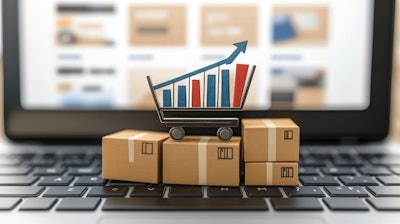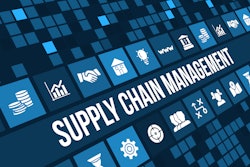
In today’s ecommerce landscape, international expansion isn’t just a growth lever—it’s a survival strategy. According to recent research from Passport and Drive Research, 91% of e-commerce leaders already view international sales as a profitable revenue stream, and nearly half say foreign markets contribute more than 20% of their revenue.
But success on the global stage doesn’t come from simply enabling cross-border shipping. It requires technology-led transformation across the entire customer journey—from discovery to delivery.
Customs delays, pricing confusion, compliance risks, and fulfillment inefficiencies still plague many brands trying to scale beyond their home market. The ones breaking through? They’re not just internationalizing. They’re localizing—with precision, speed, and smart investments in ecommerce tech.
Here are five areas where technology is reshaping the global e-commerce playbook and what’s next on the horizon.
1. Localization isn’t just language—it’s conversion strategy
Expanding internationally used to mean toggling on international shipping in your ecommerce backend. Today, that’s table stakes. To convert international visitors into customers, your storefront needs to feel like it was built for them—not translated for them.
That means not only local languages and currencies, but culturally relevant product assortments, region-specific merchandising, familiar payment options, and local trust signals. According to CSA Research, 76% of consumers prefer to buy products with information in their own language, and 40% won’t buy from websites in other languages at all.
Passport’s research shows that 75% of international ecommerce sales still come through brand-owned websites, underscoring just how critical it is for brands to optimize their own channels. Localization is no longer a post-expansion project—it’s a conversion imperative.
2. Transparent pricing at checkout builds trust and profits
One of the biggest drop-off points in the international shopping experience? The moment unexpected duties or taxes appear after checkout. For global customers, trust begins at the buy button—and that means seeing the true cost upfront.
That’s why more brands are turning to delivered duty paid (DDP) solutions that include duties, taxes, and international shipping fees right at checkout. This approach not only reduces cart abandonment but also minimizes post-purchase friction and costly returns due to surprise fees.
In fact, Baymard Institute found that unexpected extra costs are the number one reason shoppers abandon their carts. For international orders, those costs often come in the form of uncalculated duties or unclear shipping timelines. DDP removes the guesswork, and in doing so, boosts both conversion and satisfaction.
Some brands have increased international sales of total revenue by implementing more transparent, duty-inclusive pricing and reliable cross-border delivery.
3. Real-time tracking is the new baseline for customer experience
Cross-border shipping used to be a black box. Customers placed an order and then waited—sometimes weeks—with little to no visibility. That’s no longer acceptable.
In an age where even pizza deliveries are tracked down to the minute, international shoppers expect proactive updates and real-time tracking—regardless of country or carrier. Tracking isn’t just a logistics tool; it’s a core part of customer experience.
According to Metapack’s Consumer Expectations report, 70% of global consumers say visibility is the most important delivery factor. Brands that provide clear, timely tracking updates not only reduce customer support volume, they also increase loyalty and post-purchase satisfaction.
4. AI is the great global accelerator, if you use it strategically
Artificial intelligence is quietly reshaping how ecommerce brands grow—not with splashy headlines, but with tangible improvements to personalization, efficiency, and decision-making.
AI tools now optimize everything from product recommendations and landing page variations to inventory forecasts and international pricing models. According to McKinsey, ecommerce businesses that use AI-driven personalization see up to a 25% lift in revenue.
Smart brands are leveraging AI to localize faster, target more precisely, and scale leaner. For example, AI-assisted testing helps brands identify which messaging resonates in different markets—without having to manually spin up dozens of campaigns.
As generative AI matures, expect to see even more automation in content creation, dynamic translations, and AI-powered customer service, making global scale more accessible than ever before.
5. Social, search, and DTC: Owning the funnel abroad
Global customer acquisition is undergoing its own transformation. While online marketplaces remain dominant (88% of global brands sell through it), brand-owned websites and social commerce platforms are quickly closing the gap.
Social media channels are now driving over 50% of international e-commerce sales, according to Passport’s survey. And 69% of e-commerce leaders plan to increase international ad spend this year, with many prioritizing localized paid social and influencer partnerships.
Take an organic skincare brand for example. By optimizing its store for international buyers and running localized ad campaigns in key markets, the company saw a 370% increase in GMV and a 19% higher return on ad spend compared to U.S. campaigns. The DTC store became their top-performing global channel—proof that with the right foundation, your website can scale just as fast as your paid reach.
Where it’s all headed: Connected, personalized, and borderless
The next era of e-commerce technology will be defined not just by features, but by orchestration. Brands will win not by choosing one tool over another, but by integrating checkout, fulfillment, customer service, and marketing into a unified, tech-enabled customer experience.
We’re already seeing signals of what’s next:
● AI-personalized storefronts that adapt layout, pricing, and content per market or user
● Platform-native shopping making checkout frictionless inside social feeds
● Sustainability signals and delivery preferences that cater to environmentally-conscious consumers
● Local-first fulfillment models that reduce duties, costs, and delivery times
In short: the future of global ecommerce is deeply local—and powered by tech.
To scale internationally in today’s world, it’s not enough to be fast or cheap. You need to be relevant, transparent, and trusted. That takes more than logistics. It takes technology built for global buyers and bold brands alike.
The brands that embrace this next era of ecommerce—one defined by dynamic checkout, smarter fulfillment, and localized experiences—will not only grow faster, they’ll build deeper customer relationships and more resilient, defensible global businesses.
Combining flexible technology with global expertise will simplify cross-border selling and power international growth. The road to global scale has never been clearer—or more competitive. Let tech be your passport to getting there.

















![Pros To Know 2026 [color]](https://img.sdcexec.com/mindful/acbm/workspaces/default/uploads/2025/08/prostoknow-2026-color.mduFvhpgMk.png?ar=16%3A9&auto=format%2Ccompress&bg=fff&fill-color=fff&fit=fill&h=135&q=70&w=240)

